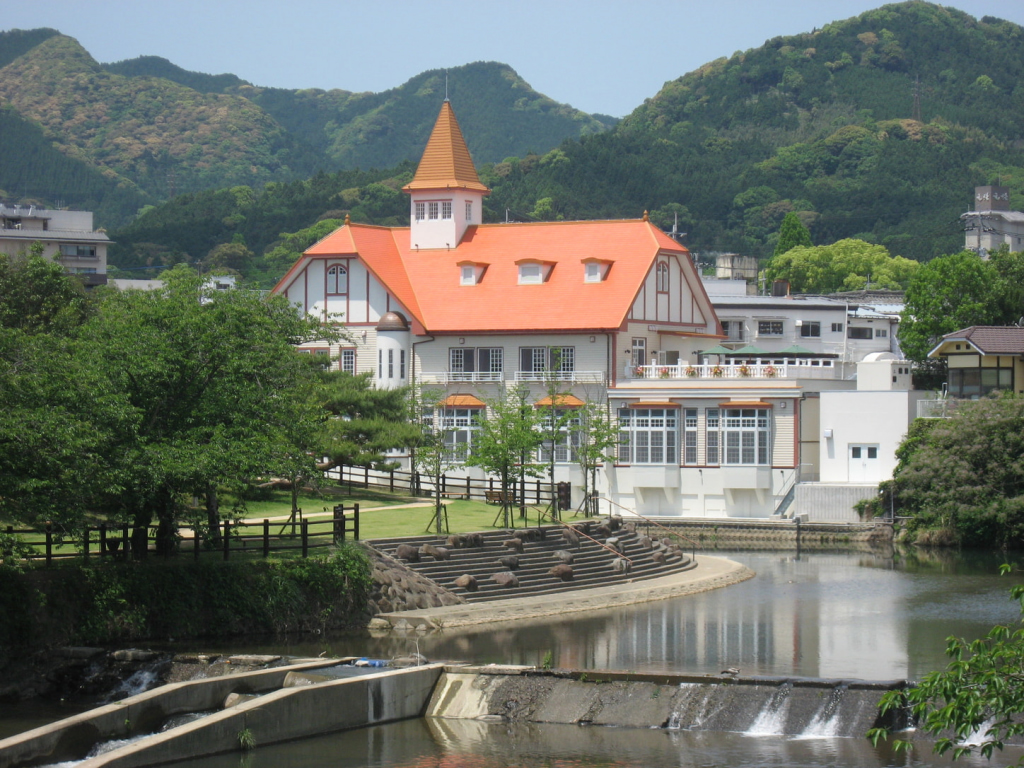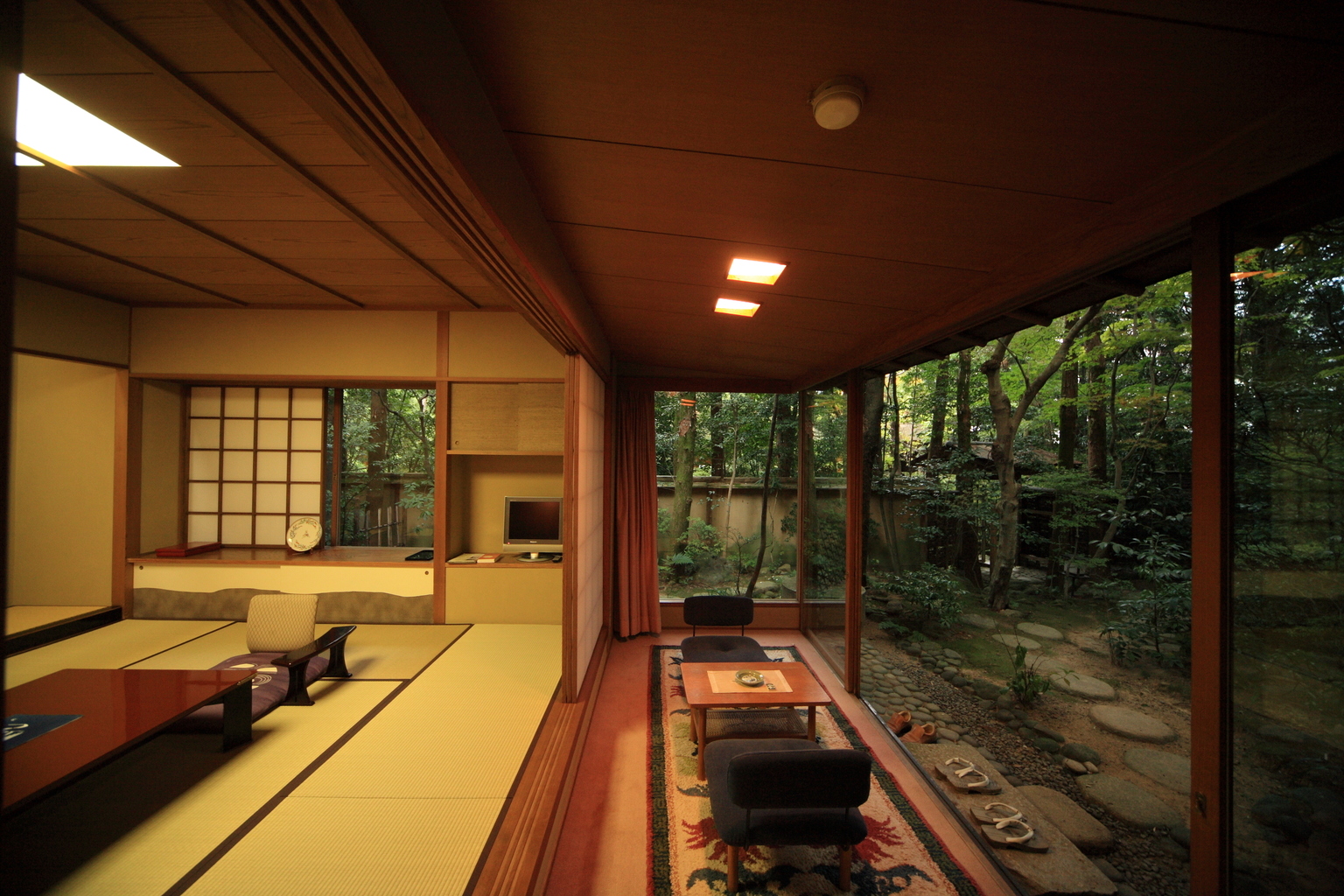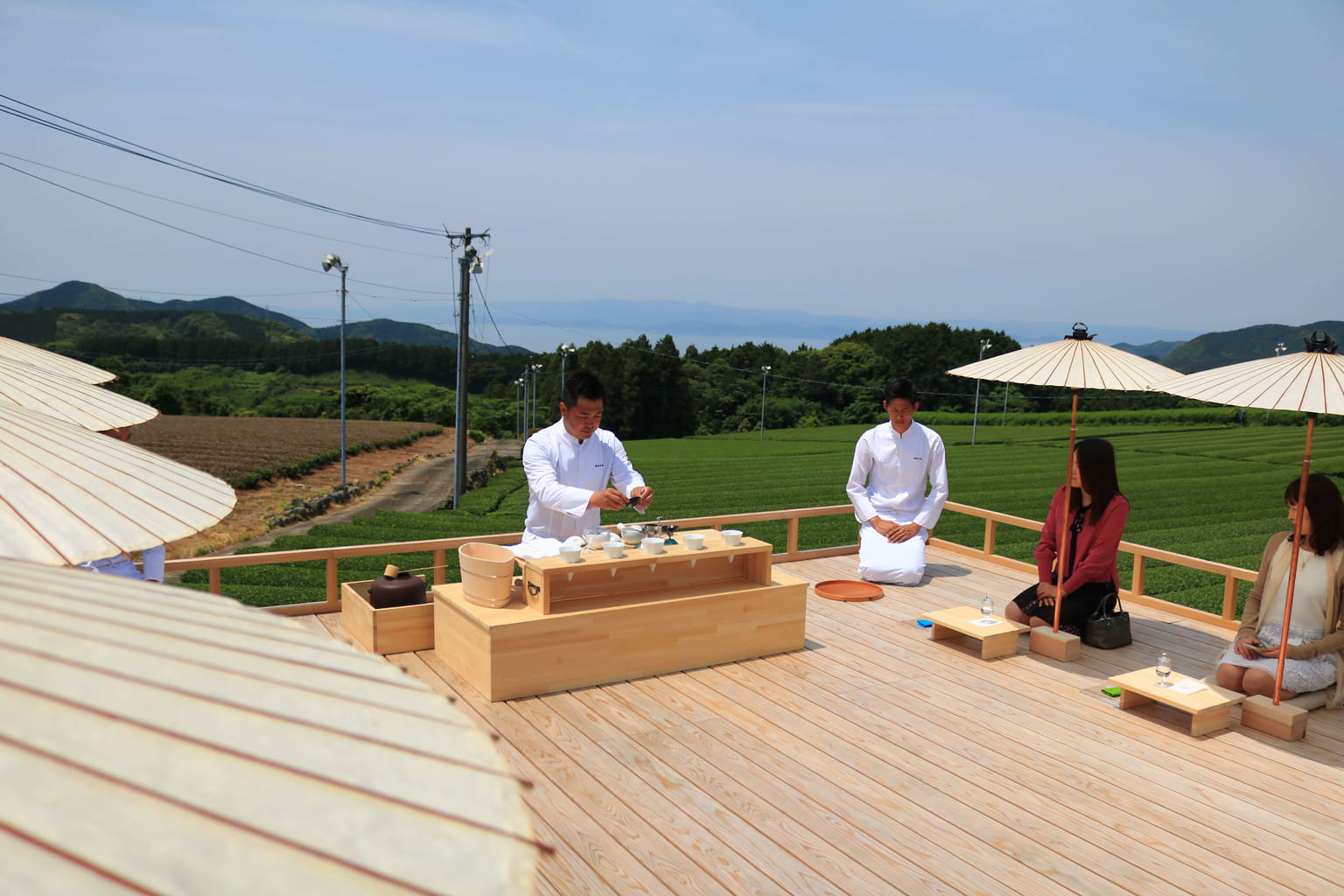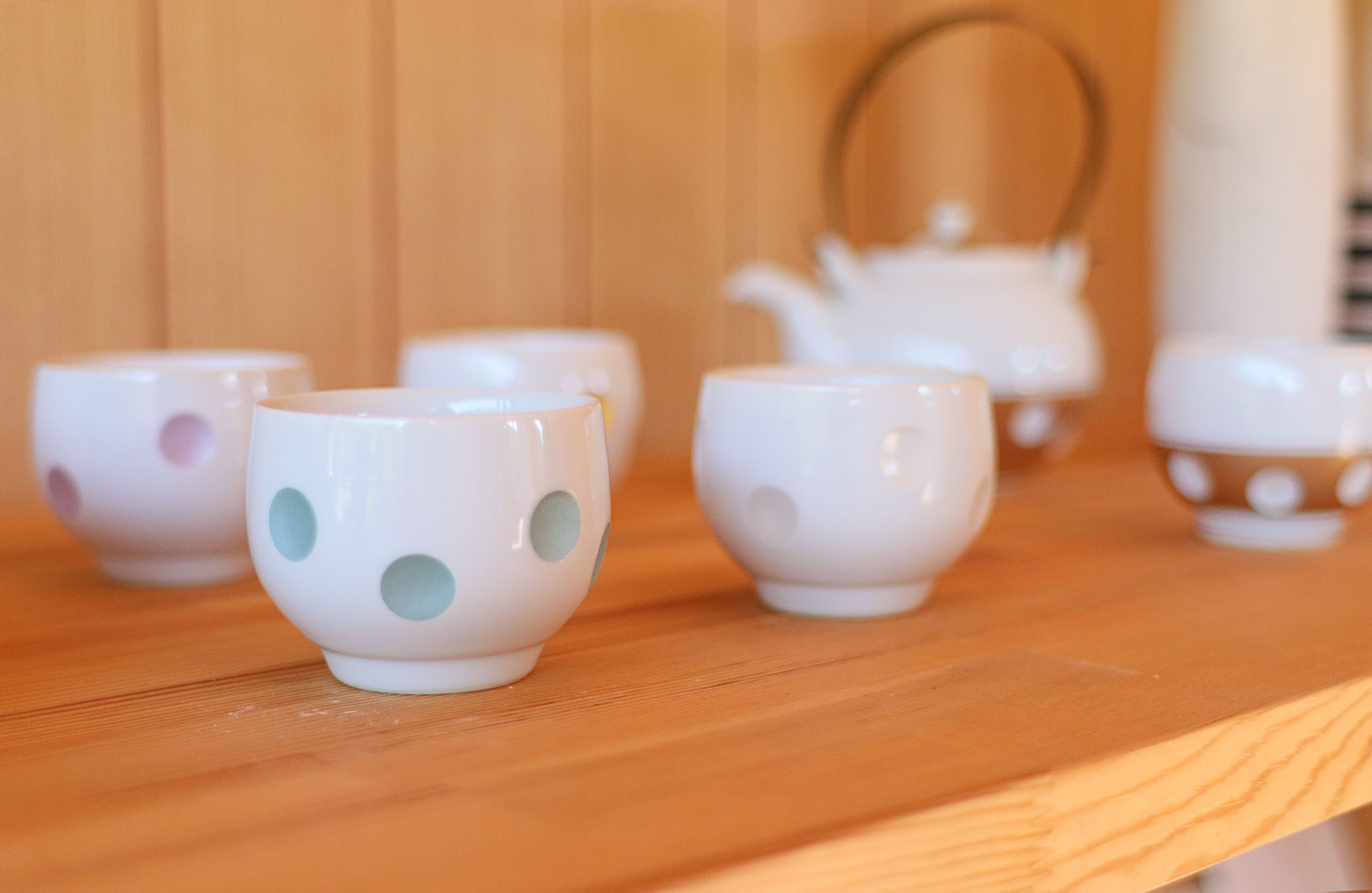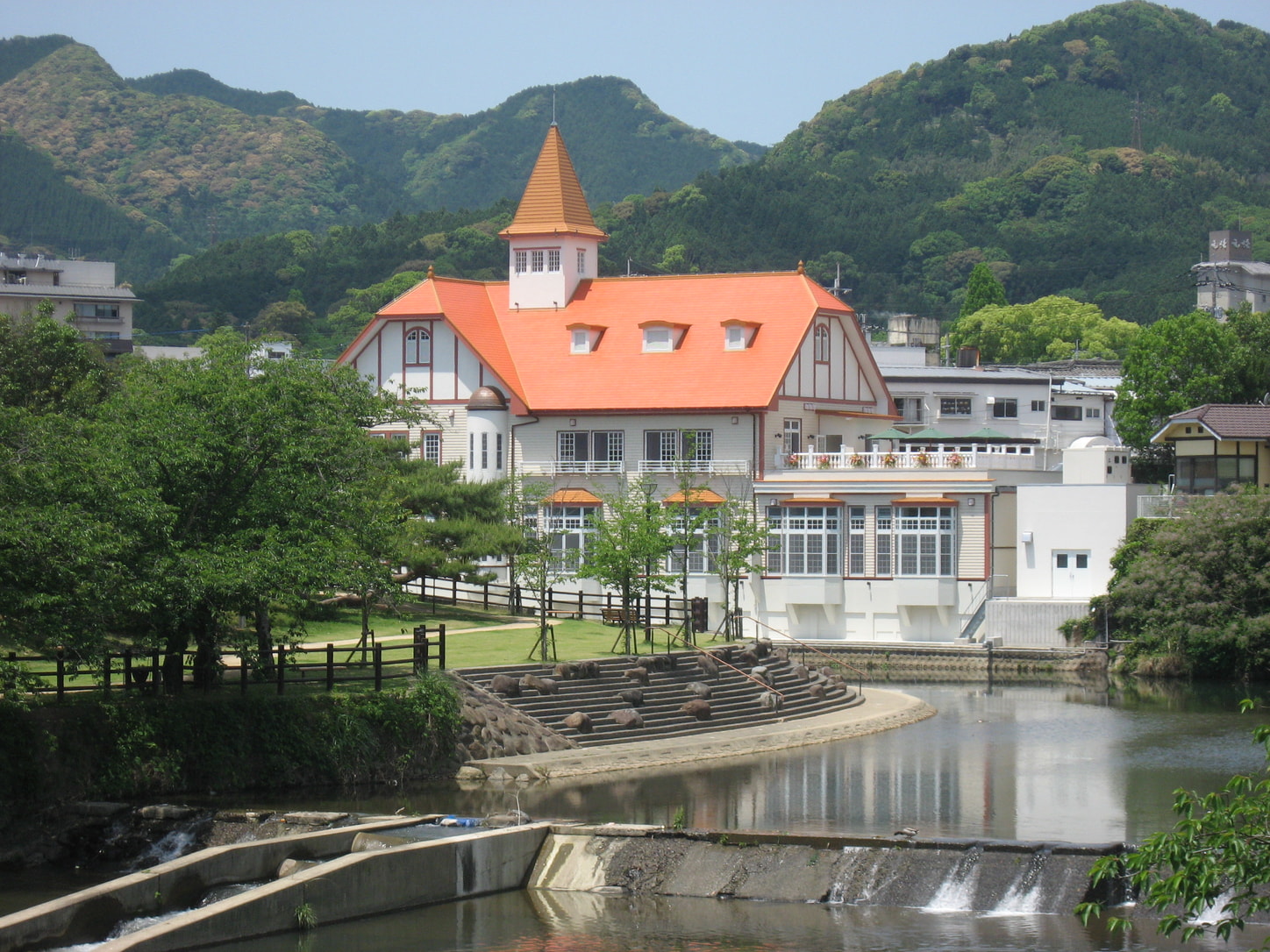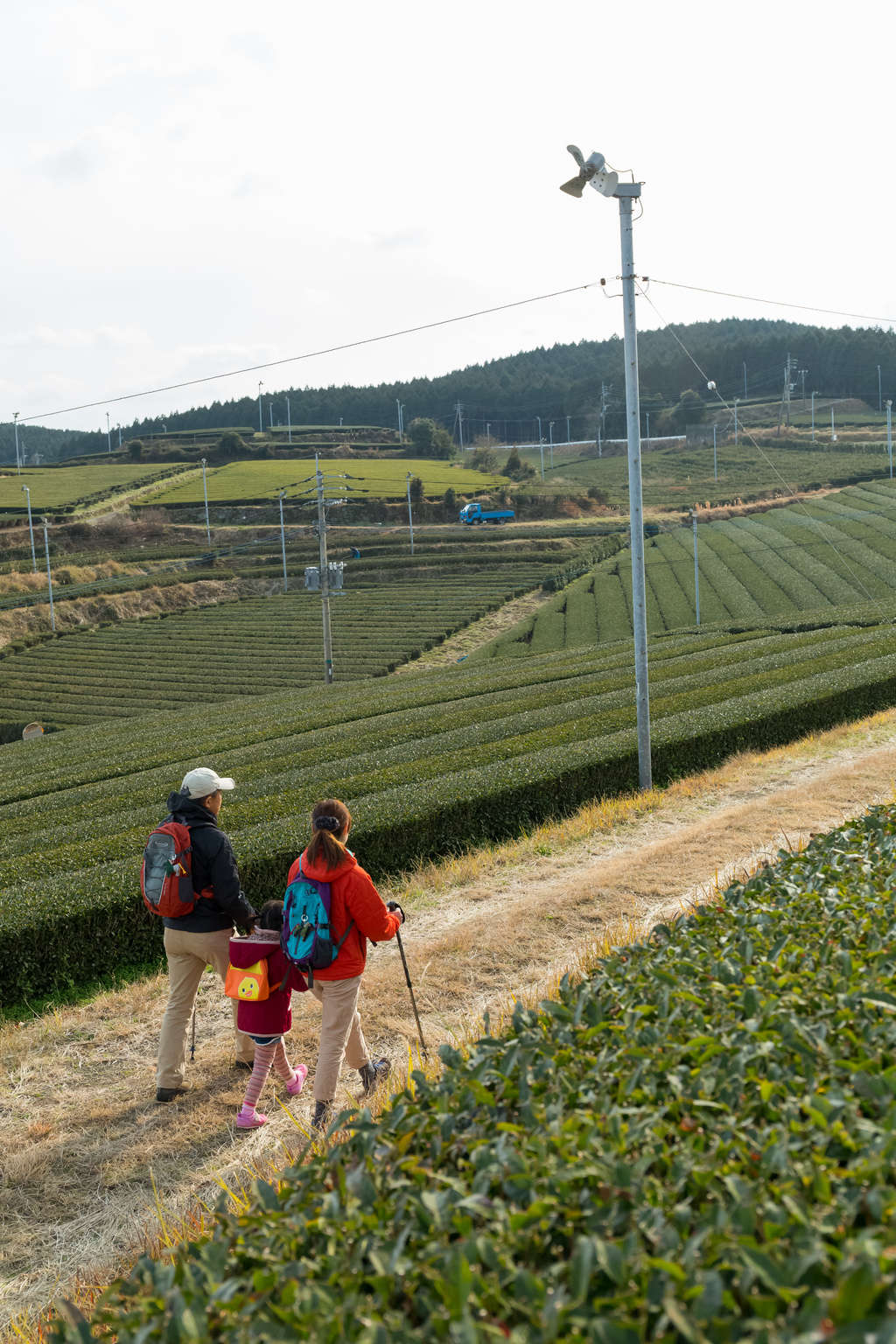Green tea and hot spring baths are some of Japan’s most prized resources, and you will find an abundance of both in Saga prefecture’s Ureshino—a city blessed with lush, rolling tea fields and restorative onsen waters. Ureshino translates as “Happy Fields”, and although we do try and shy away from clichés, this is not far off from what you are likely to experience in this captivating locale. You’ll want to stay for at least a weekend; be sure to tuck away our guide outlining five different experiences to help you make the most of your stay.
1. Ureshino Onsen
The local hot springs are renowned throughout the country for being among the top three bathing locales for bihada (skin beautifying). A soak in the local waters, which are rich in both alkaline and sodium, will leave your skin feeling supple and luxuriant.
Any weekend tour starts at the recently built public bath Siebold no Yu. Located in a barrier-free, Taisho era-style building, the communal and private baths accommodate the modern traveler – as well as families.
For overnight stays, consider one of the city’s numerous atmospheric ryokan (traditional inns). Founded more than 100 years ago, Taishoya was designed by the late architect Junzo Yoshimura. The Japanese-style deluxe annex allows guests exclusive access to the lush green space in its dedicated garden.
Onyado Takasago, which offers private use of a round bathtub crafted from the coveted Aomori Hiba tree (as well as a library), opened a new annex in 2019 that offers two simple, yet sophisticated, modern Japanese-Western style rooms.
The Hamilton Ureshino is a stylish, hilltop manor that blends English nostalgia with Japanese aesthetics. Meanwhile, the dedicated carpenters at Wataya Besso make the most of the vast site in their continuous efforts to update and renovate the exquisite facilities.
Warakuen (profiled in the Saga prefecture feature article) offers open-air baths where you can soak in Ureshino tea, said to provide additional skin-revitalizing benefits.
All of these recommended venues have taken necessary precautions to provide peace of mind during the ongoing corona pandemic.
In addition, most ryokans serve Ureshino onsen yudofu, a hotpot dish of tofu cooked in local onsen water.
2. Ureshino Green Tea & Sweets
Premium Ureshino green tea, dubbed Ureshino-cha, is a regular winner of the Production Area Award in the Annual National Tea Competition of Japan as presented by the Minister of Agriculture, Forestry and Fisheries for very good reason. The expression, “Japan’s best green tea and kamairicha (kiln-dried tea)” is no exaggeration.
Those with sweet-toothed proclivities won’t want to miss the green tea-themed specialty shop and café CHAYA6JIZOU, where local tea experts serve up green tea-flavored treats including handmade gelato. The shop is managed in conjunction with its own tea garden, and everything from tea cultivation to production is managed in-house.
Stop by Suehiro Confectionery the signature delicacy, Hikicha Furian, which was presented to the Imperial Family. This is a European-style baked confectionery with exquisite butter flavor and matcha aroma that is made by kneading Ureshino-cha into the dough.
For more tea tourism experiences, including participation in a tea ceremony performed by local green tea farmers amidst scenic fields of tea, see the feature article on Saga prefecture. One of the aforementioned farmers also operates Saryo & Bar, serving tea-themed drinks (alcoholic and non).
3. Ureshino Ceramics
This region is home to Hizen Yoshida ceramics, a type of porcelain whose origin is said to lie at the bottom of the local Narutani River, where a luminescent white stone was discovered around the late 1500s. Often distributed alongside the more well-known Arita brand of ceramics, Hizen Yoshida ceramics in fact have a longer history. Each kiln manufactures vessels with unique designs, with a typical polka-dotted series of tea wares winning the Good Design Long Life Design Award in 2010.
Visit the Shin Nihon Seito (New Japan Ceramics) company to witness the production of Hizen Yoshida wares in action. Try your hand at crafting a customized piece during an onsite workshop, or take part in a painting experience using transfer paper. Even those who aren’t skilled artisans can take home a cute, handmade keepsake.
4. Ureshino’s Retro Townscape
The central area of Ureshino is lined with boutique cafés and candy stores that give a feel for the area’s history as a post station along the Nagasaki Kaidō during the Edo era. Stop by Ureshino Café, located in a renovated ryokan built in the Taisho era, for yakikare (baked curry) – a local curry that’s topped with melted cheese and a soft-boiled egg.
Sample delicacies including shiomi manju (sweet pastry buns) at Hashizume Confectionery. This shop with a 90-year-history is operated by the always-cheerful Hashizume-san, and the shop interior and product packaging maintain the retro design and atmosphere.
Sawano-san, the patissier at Ureshian, a lovely shop located inside the kimono store Yamashita Gofukoten on the main road, has developed decadent sweets including daifuku and a tiramisu made from mascarpone.
5. Kyushu Olle Ureshino Course
Nature lovers will want to set aside a day for the Ureshino version of the Kyushu-wide Olle trekking course, which is an excellent way to experience the outdoors while also taking in important local cultural sites. The 12.5km-long path begins in the ceramics town of Yoshida Saraya, which features a number of specialty shops and studios. It then wends its way through a vast green tea plantation, past 13 Buddhist statues said to watch over travelers’ safety, and through a “22nd Century Asian Forest” of towering metasequoia trees (so named for its vision of close connections between Asian nations). The trail then returns you via the rushing Todoroki Waterfall to the Siebold no Ashiyu, which is a free public footbath where you can rest your exhausted tootsies. The entire course is said to take 4 to 5 hours for medium to advanced hikers, but it may well take longer if you plan to linger and enjoy the sights along the way.
Please note that all locations take precautions against the spread of Covid-19 infection. Visitors are kindly requested to cooperate with measures including mask-wearing, hand-sanitizing, temperature checks, etc. Please also note that some facilities may not allow visitors from areas where coronavirus-related states of emergencies are in effect; please be sure to check with all venues in advance prior to your visit.
Sponsored Post

